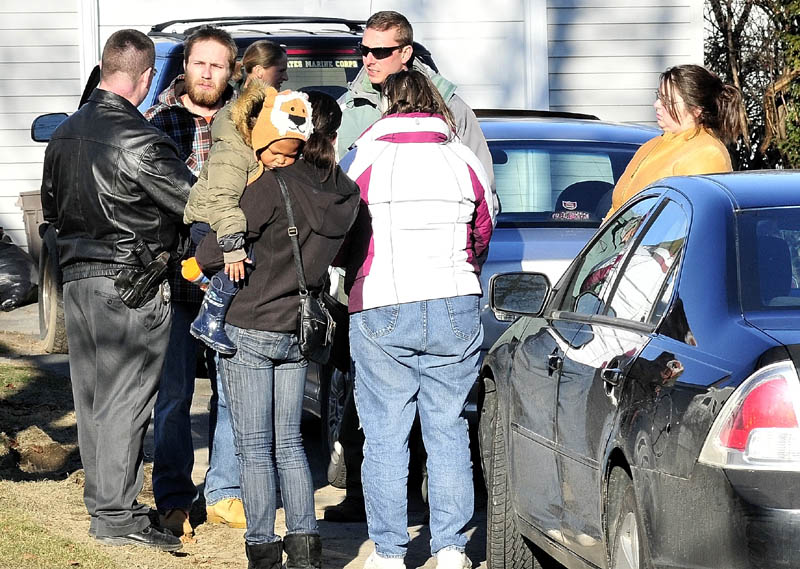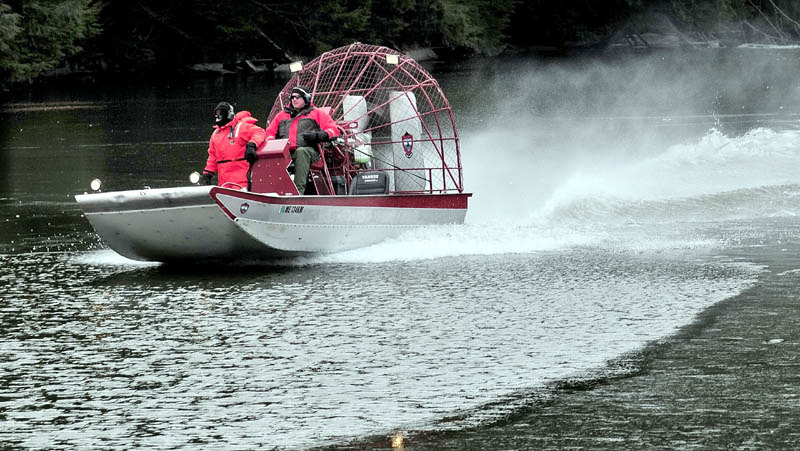WATERVILLE — At 8:41 a.m. on Dec. 17, 2011, Justin DiPietro dialed 911 and reported that his daughter, 20-month-old Ayla Reynolds, was missing.
The call set off a chain of events that eventually grew into the largest criminal investigation in Maine’s history.
This is the story of the unsolved case’s earliest moments from some of the key people involved — the police chief, Ayla’s maternal family, and neighbors — as well as insight from a law enforcement expert who knows how investigators would have approached the case and its subjects.
Police have maintained near-perfect silence during the ongoing investigation. Steve McCausland, spokesman for the state Department of Public Safety, has shared some information over the last year but mainly deflects questions with now-familiar refrain: “Those are investigative details and we’re not getting into them.”
Both Waterville police and Maine State Police have denied requests for the transcript from the 911 call that DiPietro made that morning a year ago. The dispatcher who took the call would not comment and the two police officers who were first on the scene — one of whom is now retired — won’t share what they saw and heard.
Police sent everybody
The dispatch log says two officers responded within the first 10 minutes of the call. Within an hour and a half, two more officers, two detectives and three units from Waterville Fire Department were at 29 Violette Ave., searching for the missing toddler.
Waterville Police Chief Joseph Massey, who was off duty for the weekend, arrived by 10:30 that morning with the deputy chief, Charles Rumsey. Throughout the day, more personnel arrived, including state police, the Maine Warden Service, two more detectives and three more officers from Waterville.
They searched in backyards, houses, woods, Dumpsters, and nearby rivers.
“Certainly we were hoping we would locate her in a very short period of time, but unfortunately, that didn’t happen,” Massey said.
‘I have no words’
At about 9:30 a.m., the doorbell rang at Ronnie Reynolds’ Portland home. When he opened the door, he saw a familiar face — a Portland police officer Reynolds knew through his service in the U.S. Marine Corps.
Reynolds, Ayla’s maternal grandfather, invited the officer inside and the conversation quickly turned disconcerting.
“He asked me where my granddaughter was,” Reynolds recalled. “I said, ‘Well, Ayla is in Waterville with her father.'”
Reynolds knew something wasn’t right. His heart started pounding. He lashed out at the officer.
“I said, ‘What the (expletive) are you talking about?'”
The officer told Reynolds that Ayla was missing.
“That’s when I fell to the ground and cried,” he said.
Next, the officer asked Reynolds where Ayla’s mother was, and Reynolds told him she was in a car on her way to Machiasport.
At about 10 a.m., Robert Fortier was nearing Ellsworth during a four-hour drive to see his son, Raymond Fortier — an inmate at the Downeast Correctional Facility in Machiasport — when his phone rang, he recalled.
Fortier answered the call and Reynolds told him Ayla was missing.
Beside him, Ayla’s mother, Trista Reynolds, was asleep in the passenger seat on the long drive to see her then-fiancé. Ronnie Reynolds told Fortier to keep driving to Machiasport until there was more information. By the time they reached Ellsworth, Reynolds called again to say that a detective from Waterville wanted to speak to Trista Reynolds in person.
Fortier pulled into a Dunkin’ Donuts parking lot, woke Trista Reynolds up and handed her the phone.
Groggy from sleep, she couldn’t understand what her father was saying.
“He was in a panic and crying,” she recalled. “I said, ‘What’s wrong? Talk to me.’ But he couldn’t get out the words.”
Ronnie Reynolds turned the phone over to his wife — Trista Reynold’s stepmother — who told Reynolds that her daughter was missing.
“I had no words,” Trista Reynolds recalled. “I didn’t know what to say. I was thinking, like, ‘Am I in a dream right now?’ It was all just a shock.”
Her first thoughts turned to Ayla’s father, DiPietro, who was caring for Ayla the last few months while Trista Reynolds was in substance rehab.
“The only thing I could think about was, ‘Where the hell was Justin?'” she recalled. “If he was in the house, this shouldn’t have happened. If he was protecting Ayla, this shouldn’t have happened.”
Fortier drove her to the Waterville police station. It was a long drive from Ellsworth — about an hour and a half — but Fortier said it felt longer. Neither could believe what had happened.
Fortier, 57, is a fire lieutenant in his hometown of Alfred in York County. With 34 years of experience in the department, he has dealt with tragedies — car accidents and house fires — and he tried to keep the conversation lighthearted for Trista Reynold’s sake.
Police questioning
At the police station, both were interviewed by police. Ronnie Reynolds, who arrived in Waterville about 30 minutes later, was also interviewed.
Fortier said the three weren’t there for long — in less than two hours they were sent home to southern Maine. Fortier was interviewed for a few minutes about their drive toward Machiasport, but that was it, he said. Ronnie Reynolds recalls being interviewed for about 20 minutes.
Trista Reynolds said her interview was longer. She was taken to a room and questioned by Waterville detective David Caron, she said. Caron asked her where she was headed that morning and why, and when she last saw and spoke to Ayla.
“The last time I saw her was November 21 and the last time I talked to her was December 8, and that was it,” she said.
She told Caron that she and Justin weren’t talking and she had filed parental rights and responsibility papers for Ayla.
Caron told her that Justin, his girlfriend, Courtney Roberts, sister, Elisha DiPietro, and mother, Phoebe DiPietro were also in the station being interviewed.
Later, Trista Reynolds ran into Elisha DiPietro and Courtney Roberts in a hallway.
“I said, ‘Where is she, Elisha?’ and Elisha said, ‘Where is she, Trista?'”
The timeline
Ron Martinelli, a retired police officer from San Jose, Calif., and an exert witness for both plaintiffs’ and defense attorneys, said police were most likely trying to establish a timeline of where Ayla was at each moment during the 24 hours before she was reported missing.
They may also have been conducting cognitive behavioral interviews with everyone involved.
The interviews are broken into four steps. In the first step, investigators establish rapport with the person, Martinelli said. They might talk about sports or shared hobbies.
“You’re really not even talking about the case, you’re talking about innocuous things,” he said. “The reason you do that is so you, the investigator, can get a baseline of response for that person.”
In the second step, the investigators establish a narrative. They ask the person being interviewed to share, at length, details from the moments leading up to the disappearance.
“We don’t interrupt the person. They should just talk, and you let that person get completely talked out,” he said.
During the third step, investigators ask follow-up questions to the narrative and ask people to recount their stories in reverse order.
“The human mind only goes from A to Z,” he said. “It’s extremely difficult for a deceptive person to go from Z to A. That’s how we trip people up when they talk to us.”
In the fourth step, investigators ask people to summarize their stories, which can sometimes end with a confession.
Looking for evidence
Meanwhile, at the crime scene, investigators would have been looking for any signs of the toddler’s blood, hair or other body fluids, and seeing if DNA from others in the home is mingled with it.
Investigators will also look for points of forcible entry.
“Is there any trace evidence that somebody walked up to this house or made an entry through one of the entries to the house — a door or a window,” Martinelli said. “Are there any tool marks? Is there any debris? Are there any footsteps?”
They also look for signs of falsified forced entry, he said.
In the initial moments of a missing child investigation, the focus is almost always on the parents. Custody issues, in particular, are a red flag, he said. Trista Reynolds had filed for custody of Ayla two days before she was reported missing.
He said it’s not unusual for parent or parents to not cooperate with police. Even people with ironclad alibis can be alienated by insensitive investigators and refuse to cooperate.
“It could either be that they’re truly a suspect and they’re trying to conceal something from police, or the police didn’t maintain rapport,” Martinelli said.
Only memories
During the weeks that followed, police announced that they had ruled out any possibility that Ayla left the house on her own or that she was abducted.
In January, police announced that her blood had been discovered in the basement of her home and the three adults who saw her last — DiPietro, Elisha DiPietro and Roberts — were withholding information.
In late May, police announced that Ayla probably was dead.
One year later, there have been no arrests.
Ellen Paul, a Violette Avenue resident, wonders about Ayla every time she drives by the home where she was last seen. She said the neighborhood hasn’t been the same since Dec. 17, 2011.
Even if the case is solved, it may never return to normal.
“The memories will always be there,” she said. “Nothing will change what happened.”
Ben McCanna — 861-9239
bmccanna@centralmaine.com
Send questions/comments to the editors.





Comments are no longer available on this story